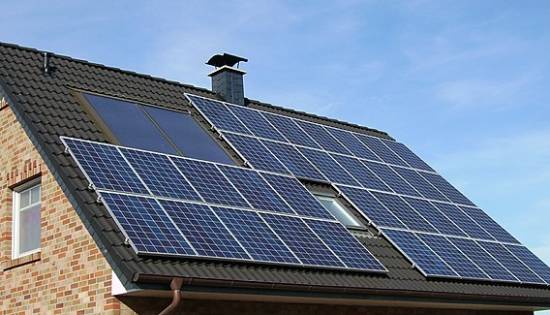This summer’s weather is perfect now in the Hudson Valley: warm, sunny days for primping the garden and cool nights that invite deep sleep. Zucchini and cukes are coming on, along with currants, gooseberries, blueberries. Unseen underground, the potatoes swell. The chickens range happily over their daily smorgasbord of bugs. At midnight, fireflies blink in the orchard. On the human side, though — commerce, culture, and politics — nothing works. At least not here in America. Sigh….
The solar electric I installed on the house nine years ago is down. It’s supposed to feed that monster called the grid. Since April, I noticed that the electric bill is creeping up way beyond the usual seventeen bucks that the electric company charges home solar producers for the privilege of feeding their system — which, let’s face it, has a downside for them because the intermittency of so-called alt-energy disorders their operations.
It’s counter-intuitive. Many people, I’m sure, assume that the more solar units feeding the grid, the better. Strangely, not so. Electric companies work much better when the production and flow of current is absolutely predictable and under their control — like, when they decide to fire up the natgas on generator number three or tune down the hydro turbines. It’s much harder to run the system with little dribs and drabs of electricity trickling in from hither and yon. But alt-energy is good PR for the government, so they do whatever they can to promote or even compel its use.
I got a whopping folio of tax breaks and subsidies from the state and federal government when I decided to put solar electric on my house in 2013, though it finally still cost a lot: $35-K. I had intimations of living through a chaotic period of history, and the decision was consistent with my general theory of history, which is that things happen because they seem like a good idea at the time. Getting a home solar electric rig seemed like a good idea.
So, last week, after considerable hassle with my solar company setting up an appointment for a techie to visit and evaluate the problem here, the guy came up (at $150-an-hour) and informed me that my charge controller was shot. The charge controller processes all those chaotic watts coming from the solar panels on the roof into an orderly parade of electrons. He also told me that my back-up batteries — for running critical loads like the well-pump during grid outages — were at the end of their design life. Subtext: you have to get new batteries.
There are four big ones in a cabinet under the blown charge controller and the inverter (for turning direct current into alternating current that is the standard for running things). The techie had some bad news, though. New building codes forbid his company from replacing the kind of batteries I have, which are standard “sealed cell” lead-acid batteries. Some bullshit about off-gassing flammable fumes. Now the government requires lithium batteries, which would cost me sixteen-thousand dollars ($16-K) more to replace than new lead-acid batteries.
Now, it’s theoretically possible for me to replace the less-expensive lead-acid batteries — they’re still manufactured and sold — but the catch is: I’m on my own getting them and installing them. I’m in the middle of that learning-curve right now. These particular batteries cost about $850-each for the four of them, plus a hefty charge for “drop-shipping” about three hundred pounds of lead and plastic. I will almost certainly go that way, though. A new charge controller will run about $2-K. All together, replacing these components represents a big chunk of change.
At the risk of sounding like some kind of pussy, I confess that this whole business of repairing my solar electric system has put me into a welter of anxiety and fury. I am trapped in the cage of sunk costs, a.k.a. the psychology of previous investment. Not only do I have $35-K (in higher-value 2013 dollars!) tied up in all this equipment — the solar panels themselves, the wall of electronic devices, the conduit, control panels, and digital read-outs — but now I have to dump thousands more into it after only nine years. It pisses me off because I should have known better. I walked with eyes wide shut into the pit of techno-narcissism.
The hyper-complexity of a home solar-electric system is extreme. There are hundreds of little integrated components that can blow, all of it adding up to a case of guaranteed fragility. There are no easy fixes or duct-tape work-arounds for any of it. I can’t make any replacement parts in my garage. They come from faraway factories via supply lines that get sketchier every day on trucks that don’t operate profitably at $6.50-a-gallon diesel fuel.
In a low-grade epiphany while going through this ordeal last week, I realized that back in 2013, instead of getting the solar electric system, I could have bought the Rolls Royce of home generators and buried a 500-gallon fuel tank outside the garage, and had a manual water pump piggy-backed onto the well, and maybe even purchased a fine, wood-fired cookstove — and had enough money left over for a two-week vacation in the South-of-France. Silly me.
Of course, these travails with my home solar electric system are a metaphor for the complexity and fragility that is, all of a sudden this year, causing the operations of Western Civ to fly to pieces. My investment in solar was as dumb as what the entire nation of Germany did in attempting to run itself on “green energy.” (Not to mention their more recent dumb-ass decision to forego imports of Russian natgas in order to please the geniuses at Tony Blinken’s State Department, the dumb bunnies.)
Of course, even when I get the solar electric back up-and-running again, something else is sure to go wrong. And in another ten years, the solar panels will be at least half-dead. So, if you’re reading this personal lamentation, consider bending toward simplicity. Wish I had.
Author
“James Howard Kunstler is the author of The Long Emergency, Too Much Magic, The Geography of Nowhere, the World Made By Hand novels, and more than a dozen other books. He lives in
![]() Please help keep us afloat. Donate here
Please help keep us afloat. Donate here



